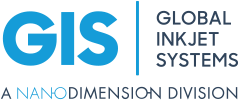Industrial manufacturing markets – the challenge for inkjet
Inkjet technology has improved dramatically alongside printhead reliability to become much more accepted in industrial applications. It is now proven that inkjet can be reliable in heavy duty 24 / 7 manufacturing environments such as ceramic tile printing, and another rapidly growing area of inkjet printing is product decoration onto a wide range of substrates – wood, glass, metals and many types of plastics.
However, there has also been a lot of development in inks, system design, software and electronics to attain this level of reliability – and maintaining accurate drop placement on a range of surfaces can still present challenges.
This transition into industrial manufacturing markets is not without issues:
- Different substrates may require different surface pre-treatments or primers before inkjet printing
- Different substrates may require coating after printing
- Compatibility with other parts of the manufacturing line, post processing and handling, ink migration, recyclability and other regulatory requirements all create complexity
Solutions through software innovation
Innovation in software can help improve image quality and enable inkjet to access new demanding applications, via techniques such as Printhead Stitching, Mixing Resolutions and Printheads, Curved Surface Printing, Nozzle Out Correction and more.
We continue to invest heavily in R&D to deliver software innovation providing the inkjet drop control required for smarter printing, as well as support for a diverse range of applications in industrial markets.

